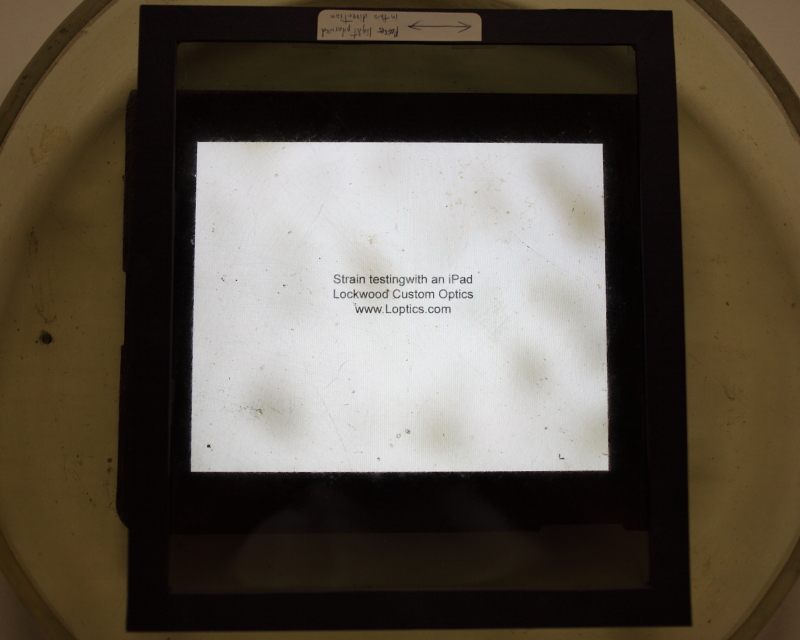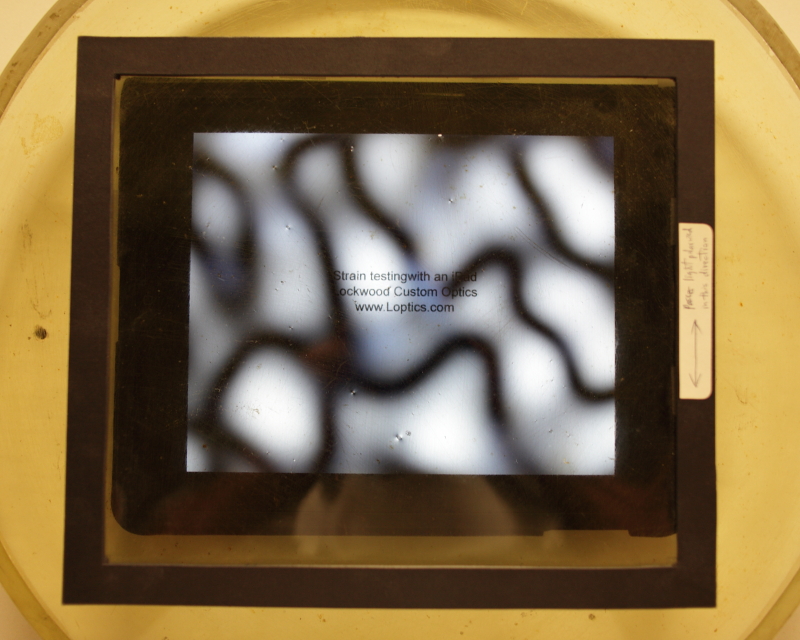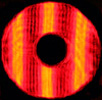Sept. 10,
2011: Strain
testing in the digital age
With a lot of talk lately about testing various blanks for strain,
striae, homogeneity, etc., I started thinking.
This
test requires a source of reasonably evenly distributed polarized
light. Typically, a source of diffused white light is covered
with a sheet
of linear polarizing material. The light that passes through
is
then linearly polarized. That light then passes through the
glass
being tested, and the light is viewed through a polarizer that is
aligned perpendicular to the first one that covers the light source.
It is important to note that we're talking about linear polarizers
here, not circular or elliptical.
Strain
within the glass changes the direction of polarization of the light as
it passes
through. If there is little or no strain, the polarized light
is
not affected, and when viewed through the second polarizer the glass
appears to be "evenly dark". If there is strain,
the polarization of the ligh is rotated. This means
that the
polarization is no longer perpendicular to the second
polarizer, and it does not attenuate it as strongly.
So, that area will appear
lighter than other parts of the glass.
It's simpler than it
sounds - put linearly polarized light through glass, and look through
another polarizer with your eye as you rotate it. If the
mirror
darkens unevenly, there is strain in the glass.
The
only drawback to this method is that the amount of strain can't be
quantified by this method. However, experiece provides some
guidelines for what strain might cause problems later on during optical
work, so it is still a very useful test.
The main barrier
to people being able to do this test themselves seems to be the lack of
a large linear polarizing sheet and a suitable light source.
This
has become a lot easier to come by in recent years since the popularity
of LCD TVs, computer monitors, and even tablet PCs has exploded.
LCD
screens produce polarized light because polarization is used to turn on
and off the pixels in these types of screens. First, the
light
passes through a linear polarizer within the screen, then the pixels
themselves act like tiny polarizers - depending on the state of the
polarization, the light either passes through, is attenuated, or is
almost completely blocked (as with crossed polarizers).
So, if
we display a white screen on an LCD device, the white light we see is
linearly polarized. We can place a piece of glass in front of
it,
and then rotate a small piece of linear polarizer material in front of
the eye or a camera and observe the results.
So, today I created
an image of a white rectangle, uploaded it to my iPad, put a
known
strained piece of glass on top of it, and then set a linear polarizer
on top of that. I photographed the results, as seen below.
The first image shows the polarizer rotated parallel to the polarizer
in the iPad:

The
second shows the "crossed" polarizer condition, where the polarizer is
rotated perpendicular to the polarizer in the iPad:

The
results are obvious - strain patterns are easily observed.
This
glass is seriously "posessed" and I'm only keeping it around as an
example of bad strain.
Note
that the second polarizer, sitting in the black matteboard frame on top
of the glass, could be much smaller, and only has to be big enough to
cover your eye or your camera lens.
This test works for all the LCD devices
that I know about, including big TVs. This means I can now
get a
nice TV for the shop and be completely justified in calling it a
business expense!
To see how the test is typically done, you can check out this page.
To see more strain tests to help you figure out if your mirror has a little or a lot of strain, see this article.
Please check back for future installements of "In
the Shop".
Mike
Lockwood
Lockwood Custom Optics





